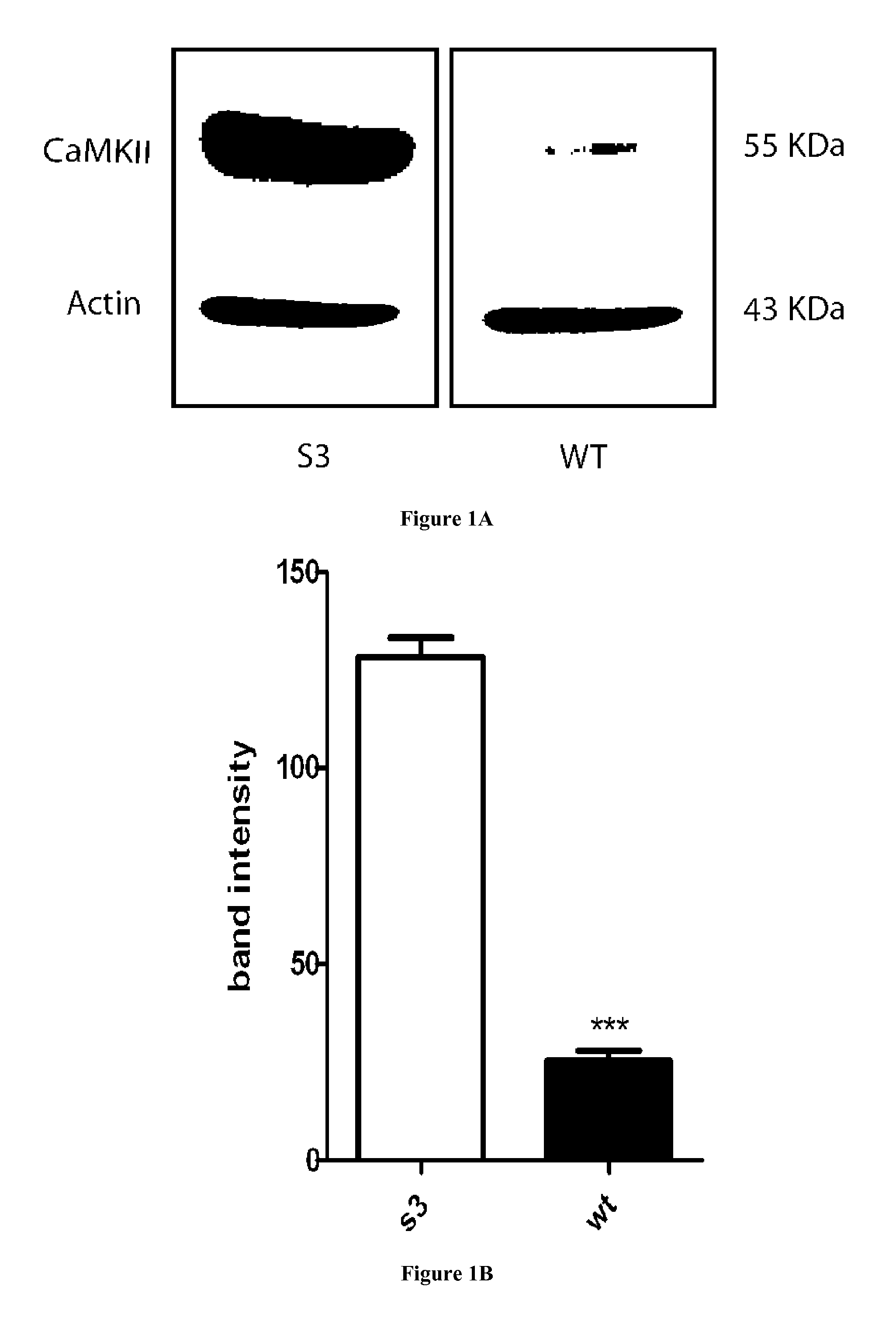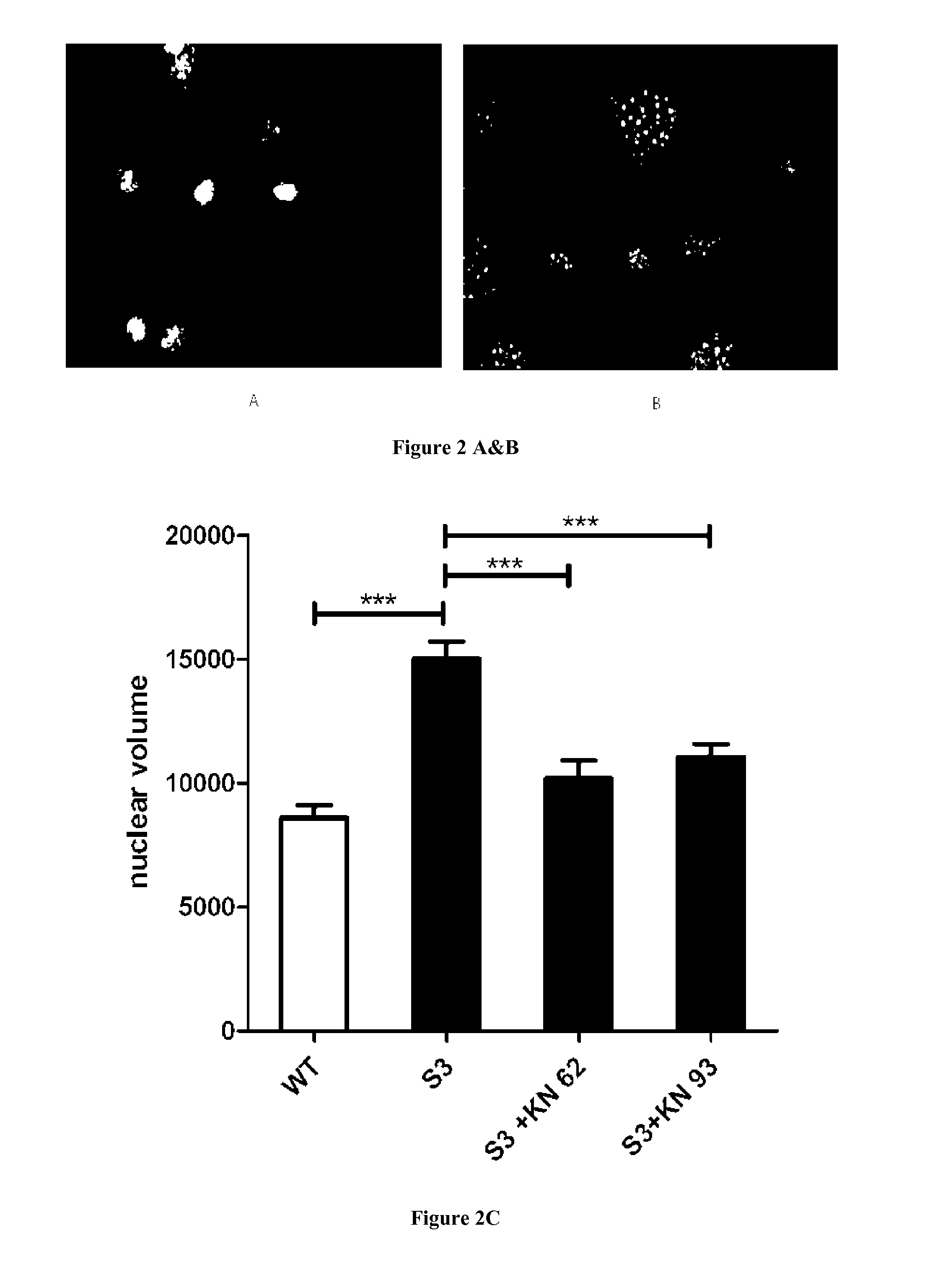Methods and Pharmaceutical Compositions for the Treatment of X-Linked Charcot-Marie-Tooth
a technology of x-linked charcotmarietooth and composition, which is applied in the direction of biocide, amide active ingredients, peptide/protein ingredients, etc., can solve the problems of slow muscular atrophy and weakness, and the difficulty of evaluation alone, so as to improve the phenotype and improve the phenotype. , the effect of reducing the progression of the phenotyp
- Summary
- Abstract
- Description
- Claims
- Application Information
AI Technical Summary
Benefits of technology
Problems solved by technology
Method used
Image
Examples
example 1
Synthesis of KN93 Derivatives: General Procedures
[0045]
[0046]Reductive Amination Using NaBH4 (1)
[0047]2-Nitrobenzaldehyde (1 equiv) was added to a stirring solution of benzylamine (1 equiv) in MeOH and stirred at 50° C. for 6 hours. The reaction mixture was cooled to 0° C. and NaBH4 (2 equiv) was added slowly. The reaction mixture was allowed to reach room temperature and was left stirring overnight. NaOH (2M) was added and the crude product was extracted using EtOAc. The organic layers were combined, washed with brine, dried over Na2SO4, filtered and concentrated under reduced pressure. The crude product was purified by flash chromatography (EtOAc / heptane 1 / 1)
[0048]N-Methylation (2)
[0049]To a stirring solution of secondary amine (1 equiv) in CH2Cl2 was added aq. Formaldehyde (37% solution) (1.1 equiv) and formic acid (2.5 equiv) and the reaction mixture was heated to reflux overnight. The reaction mixture was partitioned between CH2Cl2 and a saturated aqueous solution of K2CO3. The...
example 2
N-[2-({[(2E)-3-(4-chlorophenyl)prop-2-en-1-yl](methyl)amino}methyl)phenyl]-2-hydroxy-S′-phenylethane-1-sulfonamido (CM07-109)
[0062]
[0063]1H NMR (300 MHz, CDCl3) δ=2.22 (s, 3H), 2.90 (dd, J=9 Hz, J=3 Hz, 1H), 3.10 (dd, J=9 Hz, J=3 Hz, 1H), 3.26-3.43 (m, 2H), 3.65-3.69 (m, 1H), 4.12 (td, J=9 Hz, J=3 Hz, 1H), 4.99 (m, 1H), 6.37-6.52 (m, 3H), 7.14-7.20 (m, 1H), 7.25-7.34 (m, 4H), 7.39-7.42 (m, 2H), 7.47-7.53 (m, 2H), 7.60-7.63 (m, 1H). 13C NMR (400 MHz, CDCl3) δ=133.6, 133.0, 130.2, 128.8, 128.7, 128.6, 128.5, 128.1, 127.9, 127.3, 126.0, 60.4, 59.1, 58.8, 55.8, 41.5. MS (ESI+) M / Z found (M+H)+ 471.2.
example 3
N-[2-({[(2E)-3-(4-chlorophenyl)prop-2-en-1-yl](methyl)amino}methyl)phenyl]-4-methoxy-N-(2-methoxyethyl)benzene-1-sulfonamide (CM07-118)
[0064]
[0065]MS (ESI+) M / Z found (M+H)+ 515.2.
PUM
| Property | Measurement | Unit |
|---|---|---|
| disorder | aaaaa | aaaaa |
| affinity | aaaaa | aaaaa |
| secondary structure | aaaaa | aaaaa |
Abstract
Description
Claims
Application Information
 Login to View More
Login to View More - R&D
- Intellectual Property
- Life Sciences
- Materials
- Tech Scout
- Unparalleled Data Quality
- Higher Quality Content
- 60% Fewer Hallucinations
Browse by: Latest US Patents, China's latest patents, Technical Efficacy Thesaurus, Application Domain, Technology Topic, Popular Technical Reports.
© 2025 PatSnap. All rights reserved.Legal|Privacy policy|Modern Slavery Act Transparency Statement|Sitemap|About US| Contact US: help@patsnap.com



